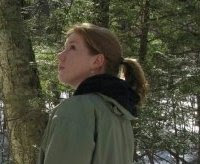Art & Nature and Technology:
1) Okay, this chapter was much different than what I anticipated. It started out with the artists I was expecting, including Andy Goldsworthy and such, but then it became not about nature but the politics surrounding how humans are screwing with nature. (I suppose I wasn't reading the title of the chapter correctly, forgetting the "and technology") But I suppose the discrepancy I experienced is sort of a point the author was trying to make - before art and nature was about making art with nature, and since Postmodernism it's now become using nature for art that has a political message.
2) There's Eco-Art and Bio-Art. I think both these categories are poor and can summarize my feelings thus: Eco-Art is really environmental activism and can't really be called Art, Bio-Art is mostly "artists" who were once nerdy kids creating their own science fiction. True, both the central issues these both address are important - man destroying nature and himself and the whole "Slippery Slope" with both of those - but somehow putting these serious issues under the term Art somehow makes it less serious to me, almost hypocritical.
Art & Deformation
3) Interesting: the increased rejection of the idealized body in art happened right alongside society's increasing demand for physical perfection in the media. The explanation for this is that artists have always made art that rejects the current trends of society. Always questioning we are...
4) Our fascination with portraying deformation is it's function: grotesque and abjections "subvert the idealized representation and bring us closer to the truth of being human." A basic process, compare and contrast two opposites to arrive and the definition of what's in the middle (a mathematical principle, the average.)
5) This chapter had more to do with Identity than the Art & Identity chapter - that one was mostly about Art & Stereotypes.
Subscribe to:
Post Comments (Atom)

No comments:
Post a Comment